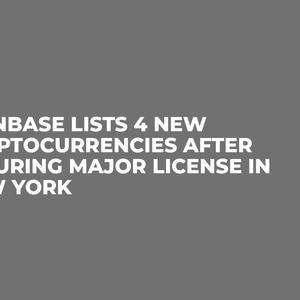XRP’s EVM-compatible sidechain vs Little Pepe’s utility-driven layer-2: who wins?
3 min read
The Layer 2 blockchain space is evolving fast, with two standout projects emerging: XRP’s EVM-compatible sidechain and Little Pepe ($LILPEPE) . Both claim Ethereum compatibility, fast transactions, and decentralized frameworks. Ripple is extending its reach through institutional-grade smart contracts, while Little Pepe blends meme culture with Layer 2 infrastructure. The key question for investors: Which one offers better long-term value today? XRPL EVM sidechain: connecting XRP to Ethereum’s world Ripple’s EVM sidechain brings smart contract functionality to the XRP Ledger, which is built with Peersyst and integrated via the Axelar bridge, it allows Ethereum-compatible dApps to operate on XRPL’s secure, compliant base. Developers can now deploy or port smart contracts while accessing XRP’s liquidity and infrastructure. According to Ripple CTO David Schwartz, the sidechain introduces new flexibility without compromising performance. The CEO of Peersyst believes this launch acts like a cornerstone for enabling multichain interoperability for Ripple’s XRP. Integrated with Squid and over 80 chains, the network targets scalable enterprise applications in DeFi, payments, and tokenization. Despite its technical depth, the XRPL EVM sidechain remains institution-focused, with higher complexity and fewer direct touchpoints for retail users or smaller developers. Little Pepe: a meme coin combined with real layer 2 tech Little Pepe ($LILPEPE) powers its own Layer 2 EVM compatible blockchain and it is built for high throughput, ultra-low gas fees, and community governance, which is rare when it comes to meme tokens built surrounding popular internet meme culture. Little Pepe stands out as a decentralized alternative to major meme tokens with wider communities with its unique features and user-protective measures. The native $LILPEPE token fuels the ecosystem covering staking, governance, and on-chain transactions. The tokenomics are clearly structured: Presale: 26.5B Staking & Rewards: 13.5B Chain Reserves: 30B Liquidity, Marketing, and CEX Reserves: 10B each Total Supply: 100B Currently in Stage 4 of its presale , 1 LILPEPE is priced at $0.0013. Over $3.58 million has been raised, with 3.06 billion tokens sold. Stage 5 will increase the price to $0.0014. Purchases can be made using ETH, USDT (ERC-20), or credit/debit cards via MetaMask or Trust Wallet. USDT buyers should hold ETH for gas. Presale progress: Stage 1: $0.001 – $500K Stage 2: $0.0011 – $1.325M Stage 3: $0.0012 – $2.5M The project roadmap includes meme-themed phases “Pregnancy,” “Birth,” and “Growth” with plans for a staking platform, meme launchpad, and community voting. No transaction taxes and anti-bot protection enhance transparency and fairness. Which crypto offers the better buy? Ripple’s EVM sidechain offers years of stability and institutional trust. It’s ideal for large-scale dApp developers and regulated environments. But it lacks grassroots accessibility. Little Pepe, on the other hand, combines meme energy with a real blockchain backbone and its presale success, open access and straightforward roadmap are pointers to a high early-stage potential. About Little Pepe ($LILPEPE) Little Pepe is a meme-driven Layer 2 project built on Ethereum standards and with real utility, a 100B token supply, and a growing user base. Its $777K giveaway is now live and 10 winners will each receive $77,000 in $LILPEPE during the presale. For More Details About Little PEPE, Visit The Below Link: Website: https://littlepepe.com The post XRP’s EVM-compatible sidechain vs Little Pepe’s utility-driven layer-2: who wins? appeared first on Invezz

Source: Invezz



